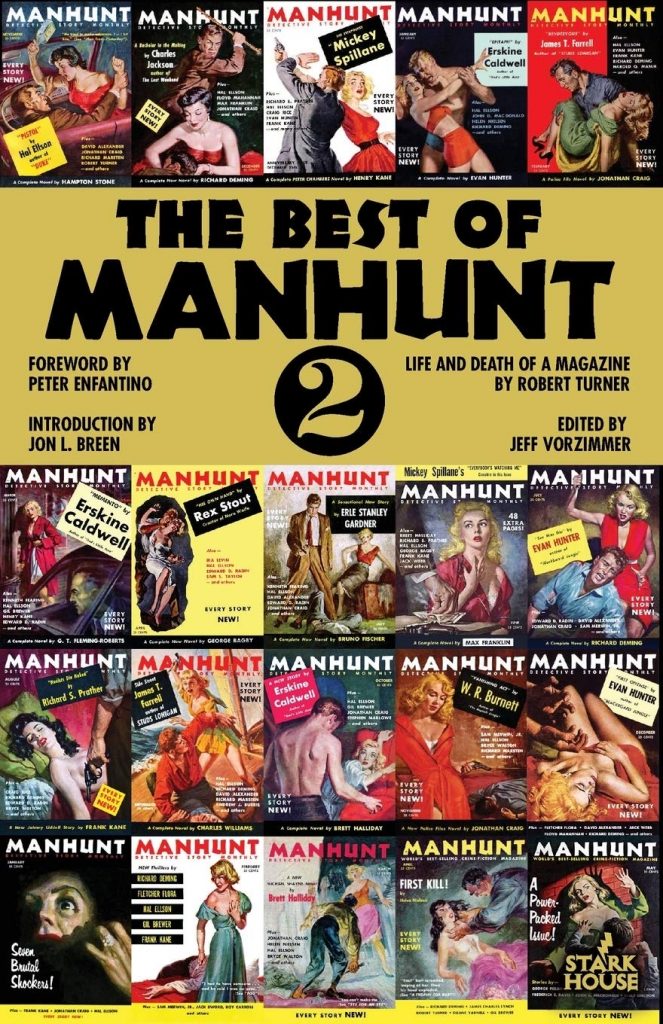
I read The Best of Manhunt 2 the past six or so weeks. Like volume 1, this is in trade paperback format, 223 pages, 35 stories ranging from 3-4 pages to novelettes. Authors include Fletcher Flora, Richard Deming, Helen Nielsen, Frank Kane, Jonathan Craig, Donald Westlake, Jack Ritchie who were to be found in volume 1.
Almost a year ago, I looked at The Manhunt Companion and The Best of Manhunt magazine. I had bought both books and The Best of Manhunt 2 from book dealer Mike Chomko at Pulpfest last year. This past August, I told Mike that I felt like needed a shower after reading The Best of Manhunt. He laughed and used that as a selling point to other potential buyers.
There are more writers who got their start from the pulp era in this book: William R. Cox, William Campbell Gault, Richard Wormser. Their execution is more like 1930s pulp detective with a few more rough edges. Bryce Walton and H. A. DeRosso are both 1950s nihilistic.
There is a story by W. R. Burnett (Little Caesar) that was more on the slick and breezy side. I read Burnett’s historical Captain Lightfoot last year that was also on the breezy side.
There are some newer writers from around 1960: Robert Edmond Alter, Edward D. Hoch, and Charles Broeckman. Alter was the last of the great cross-genre fictioneers. He wrote adventure, crime, spy but his specialty was the sea creature story. I would love for his sea creature stories to collected into book form.
There were more traditional private detective tales in this volume, a little less of normal man giving into temptation and going horribly wrong stories. As I wrote before, there is a underlying current of nihilism with fiction from Manhunt. The writing is good if not great for what it wants to achieve. This is among the most direct prose you are ever going to read. I told a friend and he was wondering why the tone of the fiction when things were supposed to be great in the 1950s. Maybe when things are good, we engage in naval gazing looking for the bad. Organized crime and corrupt politicians are common themes in Manhunt. Pulp detective fiction from the 1930s acknowledges the corruption but the protagonist still fights for what is good. There seems to be an inverse relationship with the hero when things are tough or good. I noticed that with sword & sorcery flourished when things were tough. A genre that the 1950s were not kind to also.
I will be taking a break from 65-70 year old crime fiction. I do have more of Donald Wandrei’s fantastic I. V. Frost stories to read (and imitators) from the 1930s.
Please give us your valuable comment